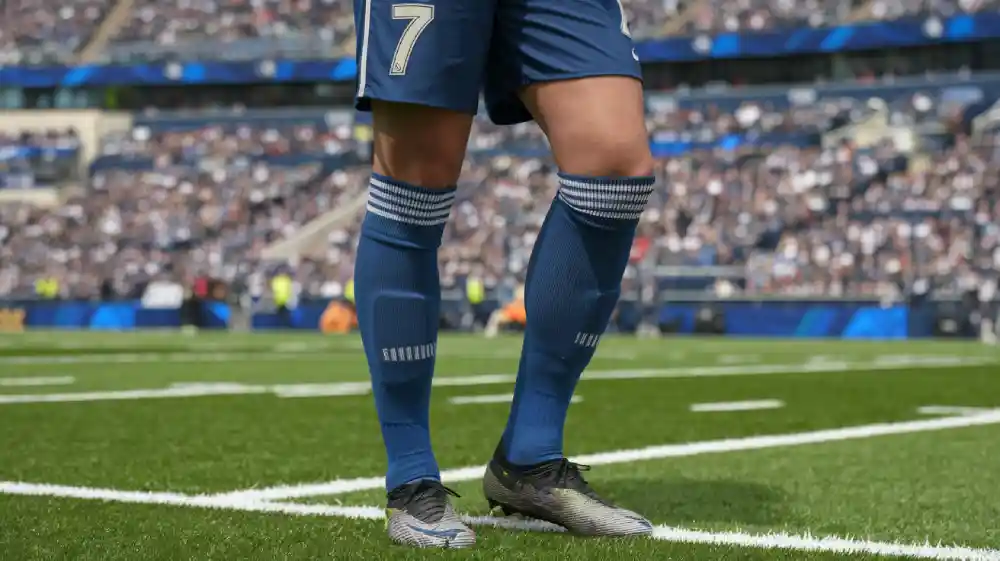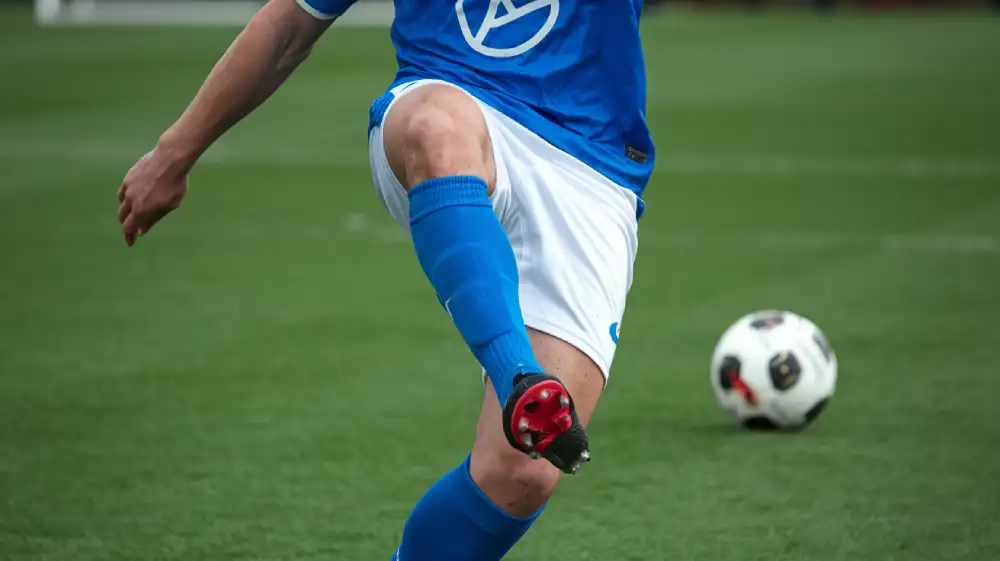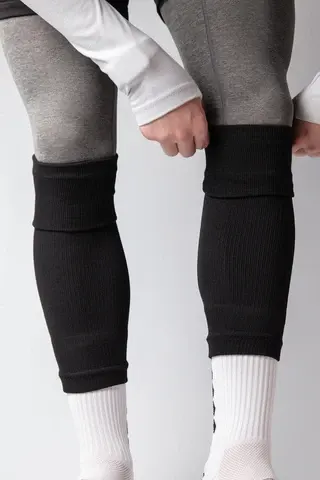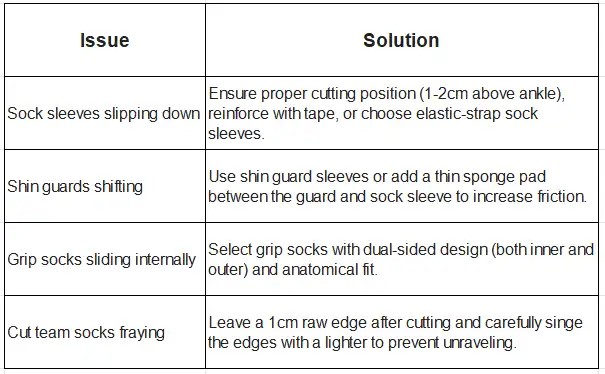
In the fast-paced world of soccer, every second counts—and the right gear can make all the difference. One accessory that’s rapidly gaining traction among professional players is grip socks. These specialized foot coverings provide unparalleled traction, ensuring swift pivots and steadfast stability on the pitch. As top-tier players increasingly adopt this innovative gear, the benefits become undeniable: enhanced agility, reduced injury risk, and superior comfort during grueling matches.
But here’s the catch: the way you wear them matters just as much as the product itself. Many players struggle with getting the fit right or layering them for optimal performance. By addressing these issues, you can boost customer satisfaction and build loyalty. This guide will help you understand the growing trend of grip socks, educate your customers, and offer a product that truly enhances their game. Let’s dive in and unlock the secrets to helping your customers get the most out of their grip socks.
Understanding the Benefits of Grip Socks for Players
- Superior Stability: Improving Balance and Agility
In soccer, quick movements and rapid direction changes are essential. Reduce foot sliding inside the shoe through the anti-slip design on the sole, which helps control the ball and switch directions more effectively. This increased grip helps players maintain better stability, allowing them to move more confidently and execute precise maneuvers with greater agility on the field.

- Reduced Risk of Blisters and Injury Prevention
Blisters and foot injuries are a constant concern for soccer players. Grip socks minimize friction and unwanted foot movement inside the shoe, significantly reducing the risk of blisters and muscle strain. Additionally, their anti-slip design keeps the foot securely in place, which helps prevent slips that could lead to ankle sprains or other injuries during intense play.
- Enhanced Comfort: Alleviating Foot Fatigue
Long hours on the field can lead to tired, sore feet. Grip socks provide targeted cushioning and compression, offering much-needed support where it’s most needed. This helps relieve pressure points, improve circulation, and reduce foot fatigue, allowing players to stay comfortable and perform at their peak, even during extended matches or intense training sessions.
- Adapt to multiple scenarios
While perfect for soccer, these socks are also suitable for sports like tennis, running, or any activity that involves frequent turning and quick changes of direction.
Customize the Right Grip Socks for Your Soccer Brand
What Defines a Quality Sock?
When customizing selecting grip socks for your soccer brand, it’s crucial to focus on features that enhance both performance and comfort. Customize socks with a secure fit and superior traction, especially in the sole and arch areas, to prevent slipping during quick movements. Reinforced zones ensure durability, allowing the socks to withstand the wear and tear of intense play. Additionally, flat, smooth seams are essential for avoiding irritation, making long periods of use more comfortable for players.
Material Matters: Breathability, Durability, and Flexibility
The materials used in grip socks directly affect their overall performance. Breathability is key to keeping feet dry and cool during play. Choose moisture-wicking fabrics, such as polyester or nylon blends, to help regulate temperature and prevent discomfort. Durability is also vital, as soccer players put their socks through rigorous use. Fabrics with flexibility, like elastane or spandex, ensure the socks maintain their shape and snug fit even after multiple washes. Combining breathability, durability, and flexibility will provide the optimal balance for performance and comfort.
Customization Options: Designing Socks That Stand Out
Customization offers an opportunity to differentiate your brand and appeal to a wider audience. Personalized grip socks can showcase your brand’s identity through customizable grip materials and patterns, such as silicone, flocking, or PVC—all OEKO-TEX certified for safety and sustainability. Brands can tailor anti-slip effects and durability by selecting materials suited to specific usage scenarios (e.g., yoga, pilates, or medical settings) and choose grip styles like full sole, partial, or patterned designs to balance functionality and aesthetics.
Beyond materials, custom sizes and lengths—from short ankle socks to mid-calf or long styles—ensure a precise fit for diverse demographics, improving comfort and anti-slip performance. International size charts further simplify global market adaptability. To meet specialized needs, advanced techniques like antimicrobial treatments, mesh ventilation, reinforced ribbing, terry soles, or arch support can be integrated, catering to performance-driven or wellness-focused audiences.

Branding is elevated through versatile logo techniques, including embroidery, printing, heat transfers, or jacquard weaving, which amplify recognition and uniqueness. Finally, custom packaging—tailored in design, material, and printing—enhances shelf appeal and perceived value, aligning with brand aesthetics and industry-specific strategies.
By combining these custom options—grip customization, ergonomic sizing, technical enhancements, and branded detailing—you create a product that resonates deeply with consumers, fostering loyalty and setting your business apart in a competitive market.
How Grip Socks Address Common End Customer Problems
- Tackling Slippery Feet: Solutions for High-Intensity Matches
Foot slippage during high-speed play can seriously disrupt a player’s performance. Grip socks address this issue by enhancing traction inside the shoe, preventing the foot from sliding. With specialized grip patterns along the sole and arch, they provide much-needed stability, ensuring players maintain control during rapid movements and quick direction changes, even in the most intense moments of the game.
- Supporting All Foot Types: Ensuring a Perfect Fit for Every Player
Each player’s foot is unique, making a proper fit essential for both comfort and performance. Grip socks are designed to accommodate a variety of foot shapes, offering a snug yet flexible fit that conforms to the foot’s natural contours. Whether a player has narrow or wide feet, these socks deliver support without restricting movement, ensuring comfort and performance are maintained throughout the game.
- Longevity and Maintenance: Durable and Easy-to-Care-For Socks
Durability is a key concern for athletes, as their gear faces constant use. These socks are made from high-quality, resilient materials that endure frequent wear and washing without losing performance. They hold their shape and continue to provide consistent support over time. Additionally, they’re low-maintenance, requiring minimal effort to care for, offering players a reliable, long-lasting solution that stands up to the demands of the sport.

Professional Advice for Choosing Grip Socks
- Thickness Selection
- Thin Socks: Ideal for players who want a closer feel for the ball and often wear snug-fitting boots.
- Thick Socks: Offer extra cushioning and are especially helpful on artificial grass fields where impact can be harsher on the feet.
- Anti-Slip Sock Design
- Look for styles with anti-slip coatings on both the inside and outside to prevent any shifting between your foot and the sock fabric.
- Sock Selection
- Socks that include an elastic band or fixing strap around the calf area can reduce pressure and help keep everything securely in place.
- Matching team color exactly is not always required. Many professional players simply choose white or black anti-slip socks for convenience.
- Cleaning and Maintenance
- Machine wash is generally fine, but turn the socks inside out and avoid high heat during drying to extend their lifespan.
- A gentle cycle or using a mesh laundry bag can help preserve the grip patterns and prevent damage.
How to Wear Grip Socks Soccer: A Step-by-Step Guide
Choosing the Right Size and Fit for Optimal Performance
The right fit is crucial for grip socks to work effectively. If the socks are too tight, they can restrict movement; if they’re too loose, they won’t provide enough support. Opt for a snug fit that feels comfortable without pinching. This ensures the socks stay in place while offering the stability and comfort needed to move freely on the field.
Proper Placement for Maximum Traction
For grip socks to deliver their best performance, they need to be placed correctly inside the shoe. Align the grip areas with the foot’s pressure points—mainly the arch and sole. The socks should fit smoothly over the heel and ankle with no bunching. Proper placement ensures the traction pads do their job, providing consistent grip and stability during rapid movements and direction changes.
Layering with Regular Soccer Socks for Extra Comfort
To enhance comfort and durability, wear your grip socks under your regular soccer socks. Start by putting on the grip socks for a snug fit, then layer the soccer socks on top, ensuring they cover the grip socks entirely. This not only protects the grip socks from wear and tear but also adds an extra layer of cushioning, preventing any irritation from long hours of play.
Securing and Adjusting Grip Socks Before the Match
Before the match, take a moment to ensure the socks are properly adjusted. Pull them up evenly so they sit comfortably around the ankle and calf, without being too tight or too loose. Smooth out any wrinkles or folds to prevent discomfort. Once the socks are in place, check that the grip zones align with the foot for maximum traction. Proper adjustment ensures the socks stay in place throughout the game, providing reliable support and comfort.

How to Modify and Wear Team Socks with Anti-Slip Socks
Professional players often cut the foot portion of their team socks to replace slippery or uncomfortable socks with high-performance anti-slip socks that offer better cushioning, support, and fit. This modification allows for a more comfortable and effective fit, ensuring greater comfort and improved mobility.
Here’s how to modify and wear team socks for optimal performance:
- Essential items: anti-slip socks, team socks (to be cut), scissors, shin guards, tape, and (optional) shin guard stays. Choose high-elasticity grip socks with a full-length non-slip design at the bottom for maximum effect.
- Ask for Coach’s Permission: Before making any equipment modifications, always get approval from your coach.
- Wear Anti-Slip Socks First: Ensure the anti-slip socks fit snugly, with the grip part covering the entire sole of the foot.
- Cut the Foot of the Team Socks: If your team has specific color socks, when cutting, measure about 1–2 cm above the ankle. This helps avoid thicker or reinforced seams where unraveling might occur. Be sure to avoid areas with extra stitching, padding, or ribbing when cutting to prevent fraying, as these can affect the fit and comfort.
- Layer the Team Socks: Put the remaining portion of the team socks over the anti-slip socks and pull them up so they overlap slightly with the anti-slip socks. Make sure the team sock portion is pulled up to mid-calf or just below the knee, depending on your preference.
- Shin Guard Placement: Place the shin guards between the anti-slip socks and the team socks, ensuring they stay securely in place. Use tape to cover the gap between the socks to fix the shin guards and make the overall fit neater.
- Final Adjustments: After wearing your boots, do a quick ankle rotation to check comfort. Tuck or smooth out any remaining wrinkles to ensure nothing slips during play.
- Wear Football Boots Last: After securing everything in place, put on your football boots to complete the setup.

If Team Socks Are Not Required
If there are no specific requirements for team socks, you can wear the anti-slip socks directly. Ensure that the grip section fully covers the sole of your foot. Since anti-slip socks are generally shorter, you can add regular socks to increase calf coverage and help secure the shin guards.
Proper Tape Placement to Maintain Sock Integrity
When taping the socks, it’s important to avoid placing tape directly on the cut section of the socks. This could cause wear over time. Instead, fold the cut portion of the socks neatly, then tape the socks just under the shin guard. This method not only ensures a neat appearance but also protects the socks from wear and tear, helping them last longer.
Scenario-Based Suggestions
- Training Sessions: If your session is informal or doesn’t require strict uniform rules, wear anti-slip socks without cutting the team socks. It’s quick, simple, and still provides the traction you need.
- Official Matches: Follow competition regulations. If you must wear team socks, neatly cut and layer them over your anti-slip socks, taping in place as needed.
- Artificial Grass Fields: Consider thicker anti-slip socks and possibly extra cushioning insoles to soften the impact on joints.
Conclusion
In summary, grip socks are an essential piece of soccer gear that can significantly enhance player performance by providing stability, comfort, and injury prevention. By choosing the right fit, properly layering them with team socks, and using smart modifications like cutting team socks for better fit and support, players can maximize the benefits of these high-performance socks. Whether you’re a retailer, brand, or player, understanding how to use and customize grip socks will help improve your game, prevent discomfort, and ensure safety on the field.
We offer tailored solutions to meet your unique needs, from design to delivery. Reach out today to elevate your product line and offer your customers the high-performance socks they deserve!
FAQs
Why are grip socks important for soccer players?
Grip socks provide extra traction inside the shoe, preventing foot slippage and enhancing stability. This allows players to move more efficiently, improving their agility and reducing the risk of injury during intense play.
Can I customize grip socks for my brand?
Yes, we offer customization services to create grip socks that match your brand’s identity, including options for colors, logos, and additional features like arch support or padding, ensuring they stand out in the marketplace.
How do I take care of grip socks to ensure their longevity?
To extend the life of grip socks, it’s important to wash them gently, preferably by hand or in a mesh laundry bag, and avoid high heat during drying. This will help preserve the grip patterns and fabric integrity, ensuring consistent performance over time.
Can grip socks be used in other sports besides soccer?
While designed specifically for soccer, grip socks can also be used in other sports such as basketball, rugby, and tennis. Any sport that requires quick, agile movements and foot stability can benefit from the extra traction grip socks provide.
Are custom grip socks more expensive than regular socks?
Custom grip socks may have a slightly higher cost due to the customization process, but they offer added value through enhanced performance features and branding opportunities. They are a worthwhile investment for retailers looking to offer a premium product to customers.
